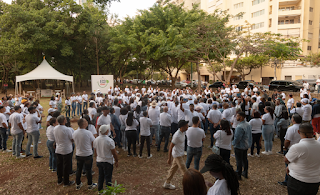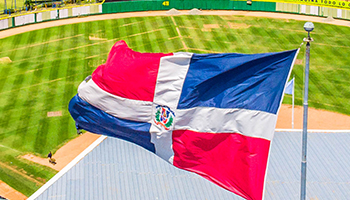World Oceans Day Highlights Potential of Oceans as Source of Productive Activity
 | World Oceans Day Highlights Potential of Oceans as Source of Productive Activity RThe Dominican Republic is joining in first official celebration of World Oceans Day to be held annually on June 8, beginning this year, as declared by the United Nations. “We can all take advantage of the opportunities to generate the wealth we have in the ocean and the coastal ecosystems if we do so rationally and with conservation in mind,” With the slogan, “Atlantic Ocean, A World of Opportunities” the Ministry of Environment and Natural Resources (SEMARENA) held an event in Cabarete where it stressed the need to take advantage, in a sustainable fashion, of the ocean’s potential to generate wealth through sports activities and ecotourism, to improve the quality of the food we eat and to generate energy (based on tidal power). “We can all take advantage of the opportunities to generate the wealth we have in the ocean and the coastal ecosystems if we do so rationally and with conservation in mind,” said the Environment Minister. He stressed that the municipalities of Puerto Plata have attractive ecotourism potential to improve its offering in Choco Park, the lakes and the wetlands in the region. With 1,612 kilometers of coast (counting the adjacent islands) and 14 of the 31 provinces of the country situated on the coast, 40% of the Dominican population lives in these areas. This accounts for 3,450,115 people, according to a 2002 population and family census. There is a fluctuating population of 2.5 million tourists living along an area of 192 beaches, according to the Environment Ministry’s Office of Coastal and Marine Resources. This means that the Dominican coastline, as a resource, is under great pressure as a result of urban expansion, installation of communities for tourism purposes, overfishing and pollution. In the DR, the vision to develop coastal and marine areas in the future is dependent on its definition, boundary limitations and the organization of its current and potential uses, such as administration under the legal framework that is currently in force based on the Law 64-00. At the moment, there is a first proposal from the National Action Plan for the Protection of the Marine Environment from Land-based Activities, worked out by 15 institutions and civil organizations related to the management of river basins and coasts, headed by SEMARENA with support from the United Nations Environment Program (UNEP), the Global Environment Facility Fund and the Integrating Watershed and Coastal Area Management Project (GEF-IWCAM) and the US National Oceanic and Atmospheric Administration (NOAA). The document establishes how to comprehensively manage rivers and oceans and aspires to be a guide for decision makers on this subject. Participants attending the celebration of World Oceans Day included the Daneris Santana, Deputy Secretary of Coastal and Marine Resources; Eridania Llibre, Governor of Puerto Plata; José Natalicio Redondo, President of the Tourism and Culture Cluster of Puerto Plata, as well as municipal authorities from the area and representatives from the Association for the Development of Cabarete, the Association of Hotels and Restaurants of Cabarete, the Association of Hotels and Restaurants of the North, the Corporation of Tourism Companies of Cabarete and the Aqualon, Vida Azul and Reef Check Foundations. Congressional Deputies Manuel Jiménez and Alfonso Crisóstomo also attended the event. Among other things at event, people built sand castles under the direction of a team of sculptors headed by Juan Carlos Polanco. There was also beach volleyball demonstrations and windsurfing, which has made Cabarete famous due to its excellent weather and wind conditions. Benefits of the Ocean Oceans cover more than 70% of the earth’s surface and play an important role in our lives in that they control weather conditions, maintain sea travel, transportation and port activity. They function as a source of recreation, productive activities such as tourism. They also provide a source of nutrition (only 250 grams of fish proved the minimum requirement for protein intake) as well as minerals and petroleum and natural gas. What Dominican Ocean and Coastal Areas Have to Offer The Dominican Republic is a country with rich natural and cultural resources; a large part of the country lies along the ocean’s coast. In this area and in the ocean itself, there exists a world of diverse tropical coastal and marine treasures with a vast diversity of species and habitats (estuaries, river basins, coastal lakes, coral reefs and ocean area up to 200 nautical miles). In keeping with the data provided by the Office of Conservation and Management of Coastal and Marine Resources, the following data has been gathered about the country’s resources:
Coastal Provinces
| |
| Date of Publication: June 9, 2009 |

Related News
-

(Versión en español) La Magia de Milly Quezada hizo suspirar corazones en el Gran Teatro del Cibao
-

(Versión en español) Yasser Tejeda inicia Gira Internacional 2025
-

(Versión en español) Se unen para arborizar el Mirador Sur, en jornada "Ecohéroes"
-

(Versión en español) Emprendedores de Banco Adopem son reconocidos en los Premios BCIE
-

Dominicanos en Grandes Ligas
Las ultimas noticias/novedades de lo que acontece con los Dominicanos en las Grandes Ligas durante toda la temporada 2019.


